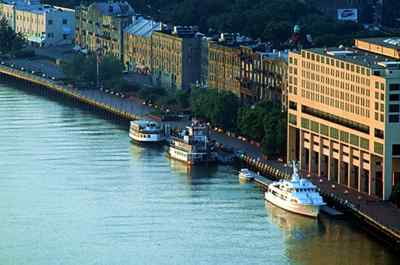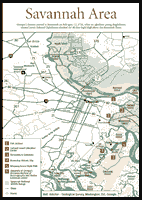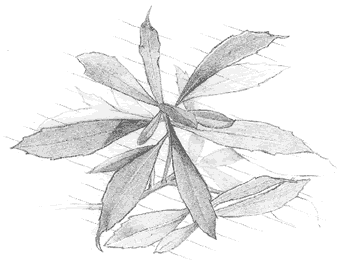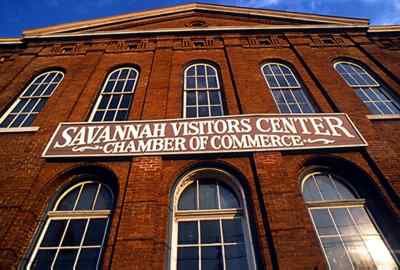 Savannah
Savannah
 Savannah
Savannah
[Fig. 6] With its cobblestone streets, historic squares, opulent mansions, and spreading Live Oaks dripping with Spanish moss, Savannah is one of the most distinctive cities in the United States, ranking with New Orleans, San Francisco, and Charleston, South Carolina. The town has a lazy, genteel feel, accentuated by the humid southern climate and laid-back nature of its citizens. There is much to see and do in Savannah, and it serves as a good home base for excursions to other, wilder areas of the Georgia coast.
Georgia's history, for the most part, started in Savannah on February 12, 1733, when an idealistic young Englishman named James Edward Oglethorpe climbed the 40-foot-high bluff above the Savannah River. Oglethorpe had arrived from England with the goal of establishing a new colony where England's poor could get a chance to work their way out of debt. With Oglethorpe were 114 colonists, who were eager to carve a new town out of the virgin pine forests that grew on the sandy bluff. The English general had already negotiated a deal with Tomochichi, the mico of the Yamacraw Indians, which permitted the colonists to establish their new town in peace. With the help of engineers, Oglethorpe marked off a planned city of wards, squares, trust lots, tything (residential) lots, streets, and avenues, creating a layout that continues to influence Savannah to this day. The town was named for the Savannah River, which took its name from an immigrant band of Shawnee Indians known as the Savana, who settled near the site of present day Augusta in 1681.
 Oglethorpe's
conscience led him to Georgia. Years earlier, a friend of his died in a debtor's
prison, which convinced Oglethorpe that a new approach was needed for dealing
with debtors. After pushing for reforms, Oglethorpe engineered a plan that would
help the poor and the King of England. His idea was to give the poor some basic
means of support and transport them to the new colonies, where they could work
and ship back valuable crops and natural resources while at the same time help
to expand the empire of England. The King agreed, and Oglethorpe sailed across
the ocean to establish the 13th American colony, which he named for his benefactor
King George II.
Oglethorpe's
conscience led him to Georgia. Years earlier, a friend of his died in a debtor's
prison, which convinced Oglethorpe that a new approach was needed for dealing
with debtors. After pushing for reforms, Oglethorpe engineered a plan that would
help the poor and the King of England. His idea was to give the poor some basic
means of support and transport them to the new colonies, where they could work
and ship back valuable crops and natural resources while at the same time help
to expand the empire of England. The King agreed, and Oglethorpe sailed across
the ocean to establish the 13th American colony, which he named for his benefactor
King George II.
Most of the settlers were not debtors, however, but skilled craftsmen and working class Britons who had talents to lend to the new colony. Over the next 10 years, thousands of colonists from many different countries and faiths came to Georgia to start a new life, including Jewish refugees from Spain and Portugal, Moravians and Salzburgers from Germany, Scottish Highlanders, French Huguenots, Irish Catholics, Italians, Greeks, and Swiss. They all played a role in helping Oglethorpe establish forts and settlements on the Georgia coast as well as defeat the Spanish at the Battle of Bloody Marsh, thus securing Georgia for England. After 10 years of work in the colony, Oglethorpe sailed home to England.
Savannah, like other Southern coastal towns, struggled for survival as it was ravaged by wars, epidemics, fires, and economic depression. One of the great battles of the American Revolutionary War was the Siege of Savannah. Early in the war, the British had seized Savannah with little trouble. American Patriots, with help from French allies, decided to attack the entrenched redcoats on October 9, 1779. After a fierce struggle, the British maintained their hold on Savannah. The battle was the second bloodiest of the war, with 264 British losses, 600 French losses, and 600 American losses. Savannah remained under British control until 1783.
A decade later, a tutor named Eli Whitney invented the cotton gin at Mulberry Grove, a Savannah plantation owned by American Revolutionary War hero Nathanael Greene. The invention revolutionized the cotton industry, and cotton became king in the South. The seaport of Savannah became very important for cities located upriver. Shipping merchants in Savannah got rich and built huge mansions.
During the Civil War, Savannah became the goal of Union General William Tecumseh Sherman, who burned Atlanta and went on his March to the Sea. When Sherman reached the city, an entrenched Savannah surrendered after the fall of Fort McAllister as Confederate forces slipped across the river into South Carolina. Luckily, Sherman did not lay Savannah to waste as he did Atlanta.
The Civil War, the boll weevil, and destructive agricultural practices put an end to the South's prosperity from "white gold." The advent of railroads reduced the importance of Savannah as a seaport, and the town went through a period of stagnation and slumber, which it was not to awaken from until the early twentieth century. During this period, development was farther south in Savannah, as citizens turned their backs to the river and their ancestors' historic neighborhoods. From the 1920s to the 1960s, the historic district deteriorated and declined. Between 1960 and 1970, the city lost 20 percent of its population, as citizens moved away from urban areas to suburbs and bedroom communities.
When developers decided to demolish historic City Market to build a parking garage, preservationists organized to oppose their plans. While the preservationists lost this battle, the seeds of the preservation movement were sown. When developers eyed the historic Isaiah Davenport House, a group of committed and influential citizens organized the Historic Savannah Foundation and prevented the demolition of the building. The foundation went on to lay the groundwork for preservation activities for the entire 2.5-square-mile Historic Landmark District, which today is the largest in the U.S. In the 1970s, millions of dollars were pumped into the historic riverfront, which became a preservation success story.
 Another
tremendous boost to Savannah was the founding and success of the Savannah College
of Art and Design in 1978, which lead to the preservation of more than 40 buildings
in the historic district. With 4,000 art students, the college contributed significantly
to the culture of Savannah, while expanding the local economy and making the
downtown area more attractive. Also contributing to Savannah's economic stability
is Savannah's continuing role as a major shipping harbor, which ranks as the
tenth busiest container port in the nation, and large corporations such as Gulfstream
and Union Camp.
Another
tremendous boost to Savannah was the founding and success of the Savannah College
of Art and Design in 1978, which lead to the preservation of more than 40 buildings
in the historic district. With 4,000 art students, the college contributed significantly
to the culture of Savannah, while expanding the local economy and making the
downtown area more attractive. Also contributing to Savannah's economic stability
is Savannah's continuing role as a major shipping harbor, which ranks as the
tenth busiest container port in the nation, and large corporations such as Gulfstream
and Union Camp.
Despite Savannah's new investments and renovations in its historic district, it was not that well known on the national stage. Its neighbor 100 miles to the north, Charleston, was a much more popular tourist destination. More like an eccentric small town, Savannah remained relatively unknown, a hidden jewel. But that was all about to change with the publishing of the book in 1994.
John Berendt's phenomenally selling Midnight in the Garden of Good and Evil drew back the curtain on Savannah's quirky Southern charms. The book strings together a series of slightly exaggerated but essentially true humorous vignettes about Savannah's more unusual characters and social traditions, with the murder trial of a prominent antiques dealer taking center stage. The book was made into a movie that was filmed in Savannah, spreading the town's image across the silver screen. It may be that no book in the history of publishing has had a greater single effect on an American city. Since the success of the book, tourists have flocked to the city in droves, looking for the city portrayed in the book. While upsetting some locals who preferred a more isolated, less-crowded Savannah, the book has nonetheless added many millions of dollars to the local economy and spurred renovation work in other historic neighborhoods. An estimated 6 million people visit Savannah a year with an economic impact of more than $800 million. To accommodate and spur additional visitors, the city is building a new $175-million, 345,000-square-foot convention center on Hutchinson Island, across the river from Riverfront Plaza.
Savannah is ranked in the top 10 best walking cities in the U.S. by Walking Magazine. Most tourists sites are concentrated around River Street, City Market, and the Historic District. River Street and City Market are thriving tourist areas within walking distance of each other that feature a collection of restaurants, clubs, art galleries, and souvenir shops housed in the historic buildings of Savannah's waterfront and City Market.
While these two areas have much to offer, visitors should not leave Savannah without spending some time in the 2.5-square-mile National Historic Landmark District. To capture the essence of Savannah, visitors should stroll through some of the historic district's beautiful squares, where they will find more than 1,700 restored homes, museums, galleries, and shops worth their attention. Officially, the district is defined by the Savannah River and Gaston Street (Forsyth Park) and bordered by East Street and Martin Luther King Jr. Boulevard. The Victorian Historic District, which stretches south from Forsyth Park for approximately 1 square mile, is undergoing renovation and development that has already swept through the neighborhoods to the north. Some beautiful lodging and delicious dining are found in this area as well.
It is recommended that visitors start their sojourn in Savannah at the Savannah Visitors Center. From here, tourists can get oriented to the town's charms by taking a tour or picking up maps and helpful information. Annual events to be aware of start with St. Patrick's Day. For more than 160 years, this riotous event has celebrated the Irish heritage of the city. The St. Patrick's Day parade is the second largest in the U.S., behind New York, and the celebration is the third oldest, behind New York and Boston. Other events to look out for are annual tours of homes and gardens, which allow a peek into some of Savannah's finer homes that usually are closed to the public. See Appendix D, Annual Events.
 Savannah Visitors Center/Savannah History Museum
Savannah Visitors Center/Savannah History Museum [Fig. 7] Located in the 1860 Central of Georgia Railroad Building, visitors starting here can get information on lodging, restaurants, and attractions that make Savannah distinctive. Walking, driving, or carriage tours are booked here. The Savannah History Museum offers an excellent introduction to the area's history. Exhibits feature Forrest Gump's bench and the Bird Girl statue on the cover of Midnight in the Garden of Good and Evil, discuss the Siege of Savannah, Savannah-born songwriter Johnny Mercer, and Savannah's railroad history.
Read and add comments about this page